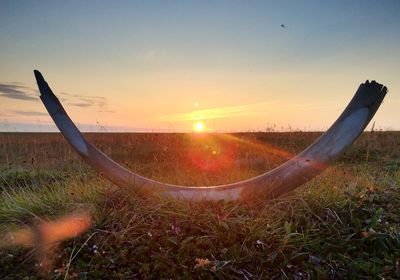ABOVE: Mammoth tusks, bones, and hair can all be potential sources of ancient genetic material. LOVE DALÉN
EDITOR’S CHOICE IN GENETICS
What separates a mammoth from an elephant? Previous genetic research looking into this question has focused largely on point mutations (also called single nucleotide polymorphisms) in which individual nucleotides within a gene have changed. But Tom van der Valk, a geneticist at the Centre for Palaeogenetics in Sweden, says that by focusing on these single point mutations, “you get a potentially limited view of all the genes that may have been important for the adaptation of the woolly mammoth to its environment.”
To determine what makes mammoths unique, van der Valk and colleagues focused on other types of mutations—insertions and deletions, in which chunks of DNA are added or removed. The group sequenced two new mammoth genomes from tusks found in Siberia and compared them (along with three previously published genomes) to their closest living relatives—the Asian elephant (Elephas maximus), African savanna elephant (Loxodonta africana), and African forest elephant (Loxodonta cyclotis). In nearly 90 mammoth genes, the researchers found large deletions (>500 base pairs) and/or small insertions or deletions (<25 base pairs) that altered the coding sequence. In mice, some of these genes are known to regulate body fat, fur growth, and ear and skeletal morphology, leading van der Valk to suggest that these mutations may have been adaptive, helping mammoths survive in their frigid environment.
“This is a pretty cool paper,” says Vincent Lynch, an evolutionary biologist at the State University of New York at Buffalo who was not involved in the research. He notes that studies of extinct animals are important for understanding the genetic signatures of extinction and why animals look the way they do. This research “is looking in the past to see what happened, but it also can help us look to the future toward populations that are endangered.”
T. van der Valk et al., “Evolutionary consequences of genomic deletions and insertions in the woolly mammoth genome,” iScience, 25:104826, 2022.









